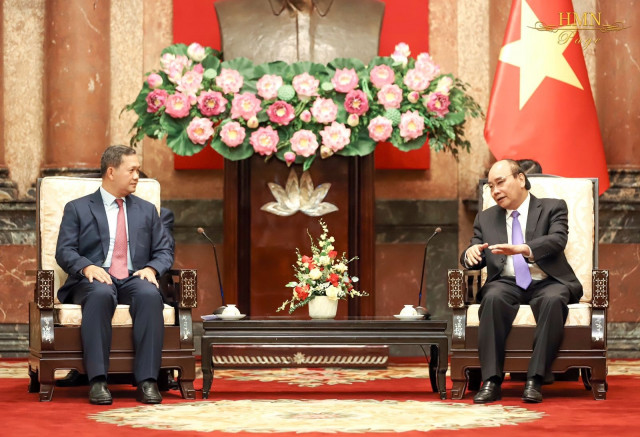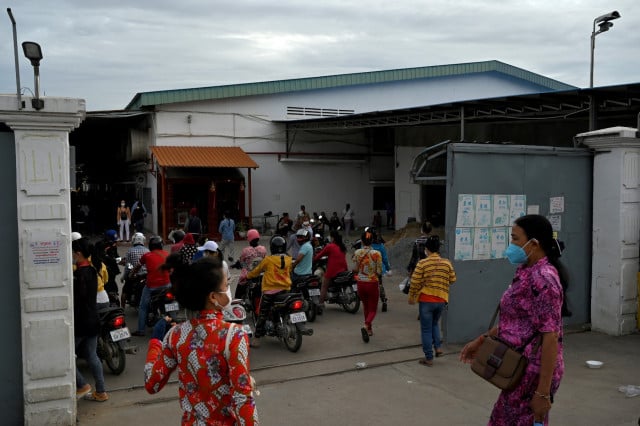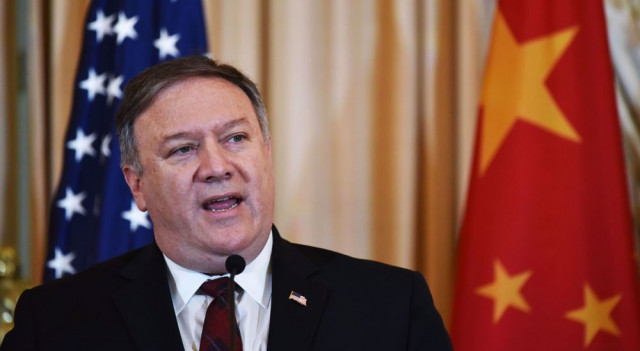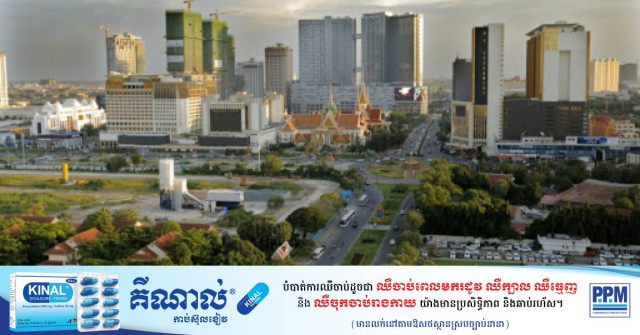An Angkorian Masterpiece to Go to France for Specialized Care and an Exhibition in Paris
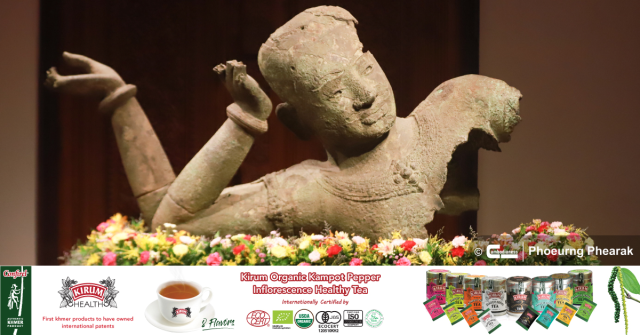
- By Michelle Vachon
- May 7, 2024 8:10 PM
PHNOM PENH — One of the masterpieces of the National Museum of Cambodia is about to embark on an overseas journey that will include a “health check” and treatment done with the most advanced technology in the field. The statue will also serve as the centerpiece of an exhibition on Cambodia’s bronze antiquities in France in 2025.
The work entitled the “Reclining Vishnu” was discovered at Angkor in 1936 and brought from Siem Reap province to the museum in Phnom Penh in the 1950s. Its imminent departure was marked on May 7 by a ceremony at the museum with Phoeurng Sackona, minister of Culture and Fine Arts, Pierre Baptiste, curator of the Musée Guimet in Paris where the exhibition will take place, and several Cambodian and French officials.
As the minister explained during the ceremony, “[T]he project aims to repair, preserve and analyze the composition of the reclining statue at the Centre de recherche et de restoration des musées de France [C2RMF, that is center of museum research and restoration of France] to further understand the ingenious techniques of large-scale metal casting in the Khmer civilization during the Angkorian period.
“The results of this study will be widely used to share experiences and talents in metalworking in the history of mankind,” she said.
 Phoeurng Sackona, minister of Culture and Fine Arts, speaks during the ceremony marking the departure of the “Reclining Vishnu” statue for France. Photo: Phearak Phoeurng
Phoeurng Sackona, minister of Culture and Fine Arts, speaks during the ceremony marking the departure of the “Reclining Vishnu” statue for France. Photo: Phearak Phoeurng
Preparing the statue for departure is involving a team of Cambodian and French museum specialists. Among other things, although only the upper part of the statue is left today, “the remaining section, the bust weighs 500 kilograms, half a ton of copper,” said David Bourgarit, a specialist of metallurgy in archeology with C2RMF. When the sculpture was complete, he said, “it probably took close to a ton of copper to cover the whole statue, and so already a technical feat.”
The Reclining Vishnu was found at the West Mebon temple, which is located in the middle of the kilometers-long water reservoir West Baray in what is today the Angkor Archeological Park. Originally about five meters, the bronze statue was made in a foundry, and not with hammered sheet metal, said Brice Vincent, an archeologist specializing in metallurgy in charge of the Siem Reap city office of the École Française d'Extrême-Orient (EFEO). The Khmer had been using this technique for centuries, he said. “We have Chinese sources that talk of Funan [Cambodia’s kingdom going back to the 1th century] mentioning that the people of Funan knew how to cast a statue.”
During the Angkrian era, there were foundries near royal palaces, Vincent said. “Bronze and copper are precious materials. So, producing and displaying images in those metals contributed to expressing royal power,” he said.
Why have so few bronze works from those eras been found in Cambodia? “Bronze has always been a precious metal, and when the temples were abandoned, the works in the temples were immediately taken by the victorious people who had defeated the Khmers,” said Pierre Baptiste, curator of the South-East Asia Collection at the National Museum of Asian Arts-Guimet in Paris. People would take the bronze to cast images to their liking, he said, which is why there are often only traces left to show there was bronze at a temple.
 Pierre Baptiste, curator of the South-East Asia Collection at the National Museum of Asian Arts-Guimet in Paris, speaks during the ceremony held to mark the departure of the “Reclining Vishnu” statue for Paris. Photo: Phearak Phoeurng
Pierre Baptiste, curator of the South-East Asia Collection at the National Museum of Asian Arts-Guimet in Paris, speaks during the ceremony held to mark the departure of the “Reclining Vishnu” statue for Paris. Photo: Phearak Phoeurng
For the exhibition on Cambodia’s bronze antiquities at the Musee Guimet in Paris to be held from April to September 2025, the National Museum plans to send bronze objects from its collection, said Chhay Visoth, director of the Museum Department at the Ministry of Culture and Fine Arts and director of the National Museum. Since the “Reclining Vishnu” is going to Paris for examination and specialized care, he said, “we thought about taking another step, showing the great [bronze] techniques of the people of the Angkorian period…to let the public know about these great techniques. That’s why we thought of an exhibition…and discussed with the Guimet museum loaning…126 bronze objects from different periods—pre-Angkor, Angkor and then post-Angkor—to show the variety of the techniques…that the Khmer used in the past.”
“This project was initiated during the official visit of King Norodom Sihamoni to France on Nov. 13, 2023,” said Sum Mab, spokesperson of the Ministry of Culture and Fine Arts. “[Then the project] received full support from the governments of the two countries during the visit of Prime Minister Hun Manet [to France] on Jan. 18-19, 2024.
“The results of the past cooperation demonstrate the strong will of the two countries to support and promote culture,” Mab said.
_1715086190.JPG)
Teng Yalirozy and Torn Chanritheara contributed to the story.








